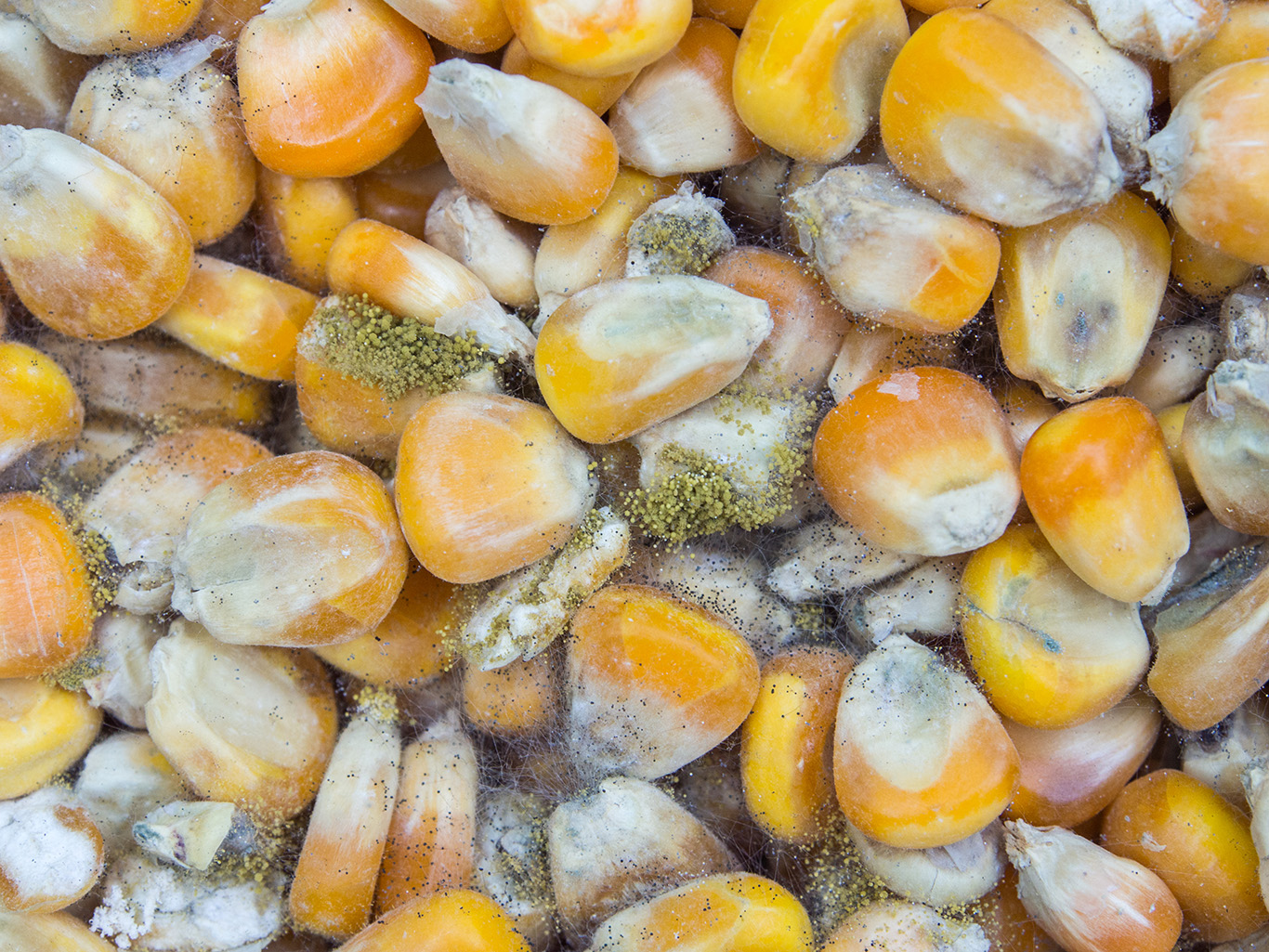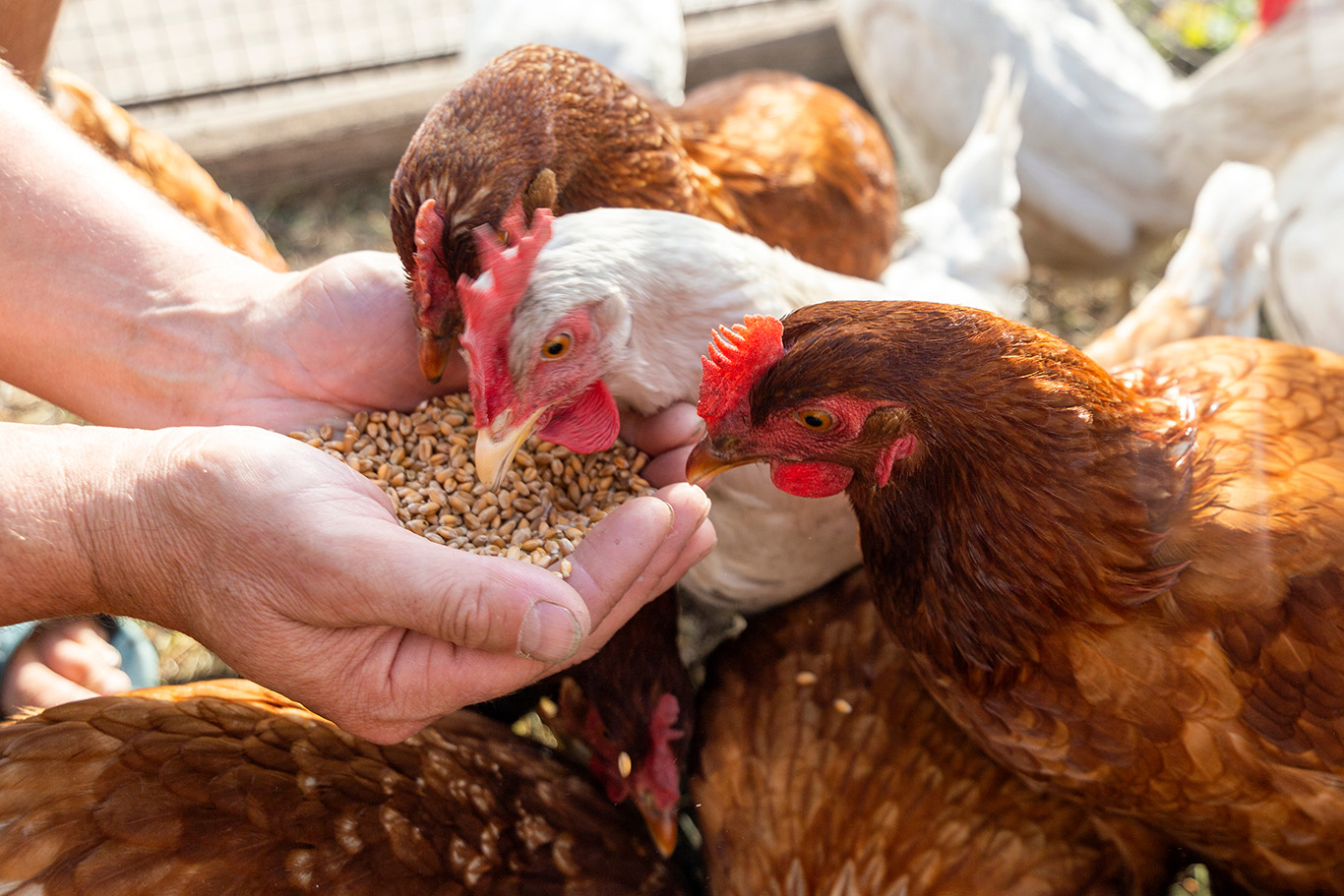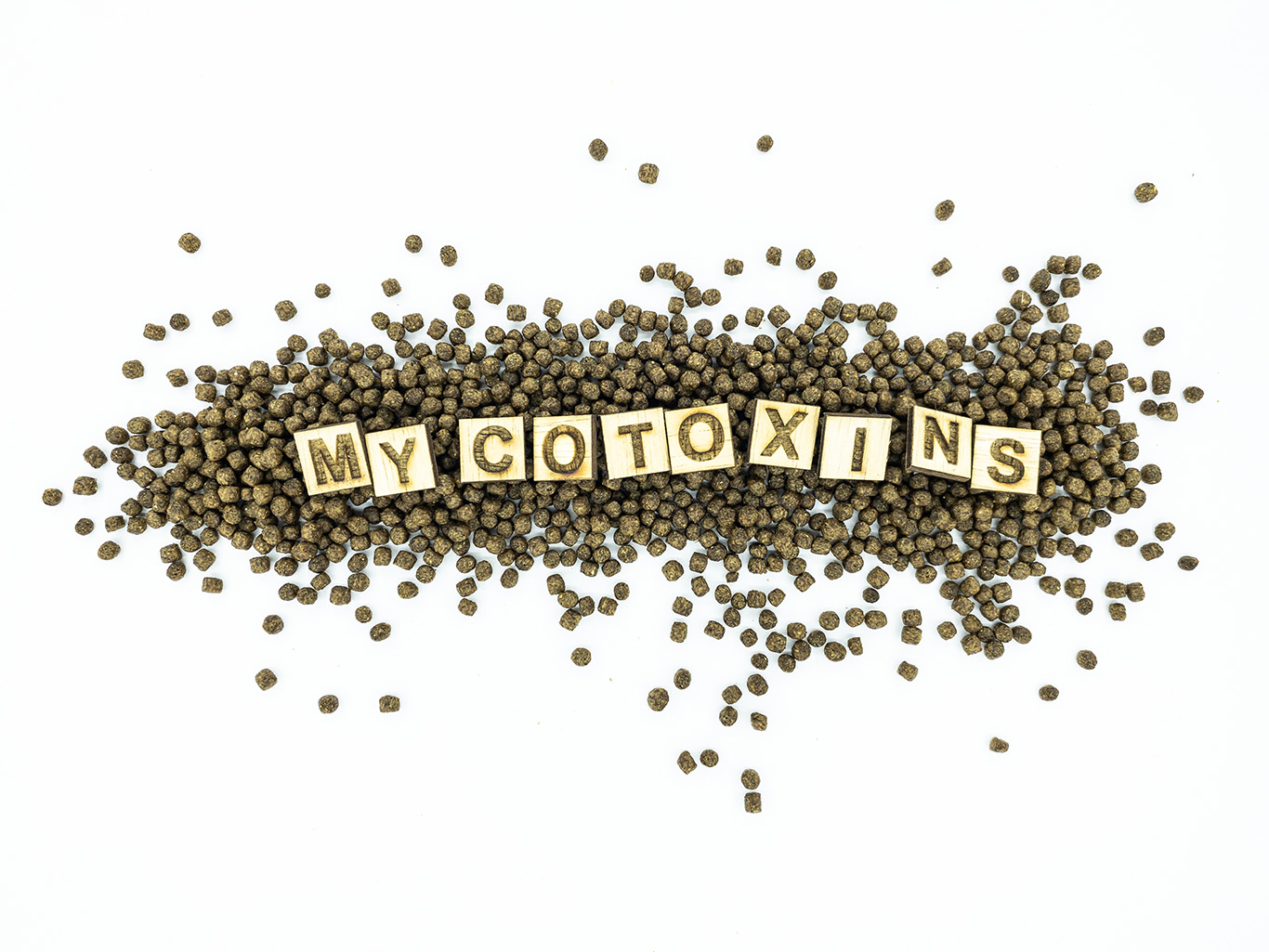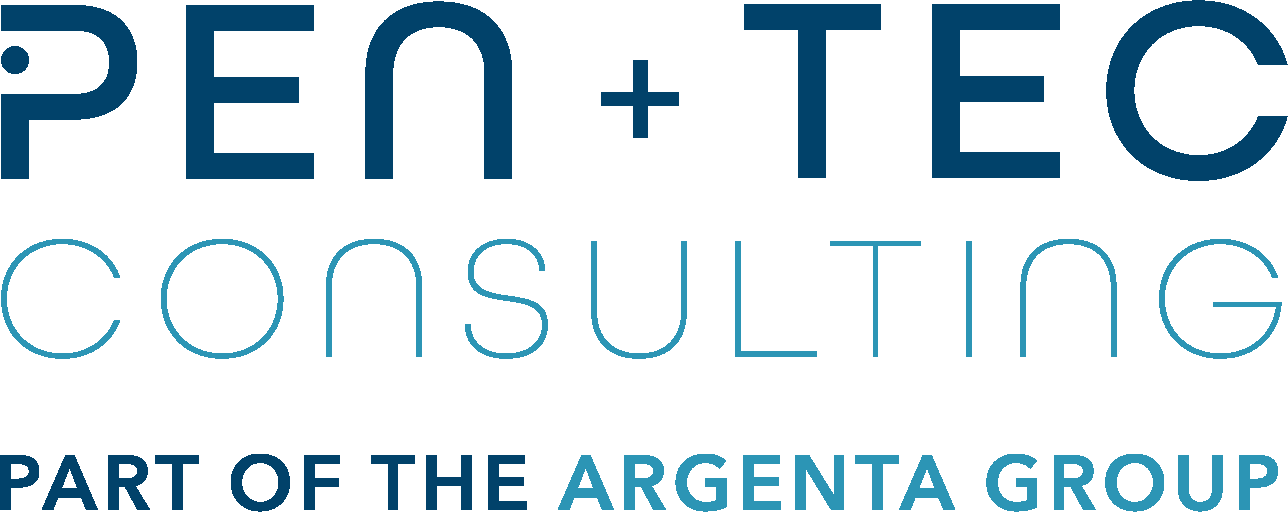Guidance on how to register a mycotoxin binder
Posted 25 August, 2022
The presence of mycotoxins in feed has a negative impact on animal production, animal health, and potentially, consumer health. It has been found that when animals are exposed to mycotoxin contaminated feed, they are often more prone to secondary infections. Other signs and symptoms that can be observed in animals exposed to mycotoxins through the ingestion of feed are depression, lower feed intake rates, morbidity, and in extreme cases, the ingestion of high levels of mycotoxins can even lead to death.4 The cost of eliminating the contaminated feed must also be considered and this will further exacerbate the negative economic impact.

Mycotoxins can be described as secondary toxic metabolites produced by certain strains of fungi1 and could potentially be present when there is mould growth on the ingredients used to produce animal feed. 3
It is however worth mentioning that mould growth can take place during various stages of the feed production process, that includes ingredients as well as finished feed. Precautionary measures need to be in place at key points in the feed manufacturing cycle to reduce the presence of mycotoxins as much as feasibly possible.
One of the key preventative measures is the inclusion of mycotoxin binders to feed. Let’s take a closer look at these products.
What is a Mycotoxin binder?
A mycotoxin binder functions as a substance that binds to the mycotoxins present in the feed to prevent the absorption of them through the intestinal tract of an animal. Customers may find it reassuring when mycotoxin binders are routinely added to feed.5
These binder products should have the following desirable characteristics:9
- Successful at isolating the mycotoxin of interest
- Bind to a single specific mycotoxin in some cases, or binding to multiple mycotoxins in others
- Substantially prevent animal toxicity
- No adverse effects should be observed in the animals ingesting the binder and if some adverse effects are observed, they should not outweigh the benefits
- The cost of the product should make the inclusion of it profitable as well as practical
- Residues of mycotoxins should not increase in the animal/products
- Animal food products should not be negatively affected by the binder
- The binder should not mask the mycotoxin in the feed so that it cannot be established
- Binders must be easily incorporated into commercial feed manufacturing operations
- Efficacy and use of the binder should be easily verified
Examples of mycotoxin binders are some potential absorbent materials which include activated charcoal, aluminosilicates (bentonite, clay, montmorillonite, phyllosilicates, zeolite), complex indigestible carbohydrates (cellulose, polysaccharides in the cell walls of bacteria and yeast such as glucomannans and peptidoglycans) as well as synthetic polymers such as cholestyramine, polyvinylpyrrolidone and derivatives.9

Mycotoxin binders need to obtain a registration with the European Commission in order to be commercially marketed and included in animal feed in the European Union. Let us take a brief look at the process involved to register these products:
EU Registration process
In the EU, “substances for reduction of the contamination of feed by mycotoxins” are classified within the “technological feed additives” category.2 This group of products must be registered following the rules described in Regulation EC 1831/2003, which is the lays out the procedure for the registration of feed additives. EFSA requires further scientific and technical requirements, and these are outlined in Commission Regulation EC 429/2008. The European Commission (EC) will decide on the approval of the feed additives for use in the EU after EFSA has performed the risk assessment. Feed additive approvals are granted for ten years and can be renewed.
Below is a step-by-step summary of how the registration process works7. The application procedure for feed additives can be broken down into 4 phases:
First is the pre-submission phase:
- The potential applicant can optionally request general pre-submission advice
- For renewals: the potential applicant notifies a list of intended studies which undergo a public consultation procedure
- The potential applicant notifies studies commissioned or carried out as of 27 March 2021, prior to the study start
Point 1 through 3 is completed by the applicant.
Second is the submission phase and completeness check:
- Applicant submits the application via the E-submission Food Chain Platform
- The European Commission checks the application and sends a mandate to EFSA who is responsible for the evaluation of the dossier
- Receipt of the application by EFSA and completeness check within 30 working days. Missing information will delay the process and EFSA will request that applicants provide the required information.
Point 1 is completed by the applicant, point 2 is completed by the EC and step 3 is completed by EFSA.
Third is risk assessment phase:
- EFSA validates the application
- EFSA launches public consultation on the application dossier
- EFSA performs thorough risk assessment
- EFSA panel adopts the scientific output.
Points 1 through 4 is completed by EFSA.
The risk assessment phase can take up to 6 months. If EFSA requests additional information, this scientific risk assessment process will be put on hold until the applicant can supply the information.
Last is the post-adoption phase:
- EFSA publishes scientific output.
- Based on ESFA´s advice, the risk managers at the Standing Committee on Plants, Animals, Food and Feed (ScoPAFF) take the decision on granting authorisation of feed additives for their placing or use in the European market.
Point 1 is completed by EFSA and point 2 is completed by the EC and Member States representatives.
Guidelines for trials required for registration
EFSA technical guidelines must be used when authorisation is sought for mycotoxin binders. This provides EFSA with sufficient scientific evidence on the additive’s characterisation, safety, and efficacy in order for them to make a recommendation. In relation to efficacy, the guidance document can be accessed via the EFSA Journal.8
The target species that will receive the feed additive as well as the mycotoxin against which the additive will be working should be stated.

To provide proof of the planned effect of the additive, an array of in vitro studies should be submitted by the applicant. It is important to remember that in vitro studies do not adequately simulate the conditions in the gut or the differences between target animals and their metabolism. Therefore, for mycotoxin binders, in vivo studies are submitted to support in vitro studies.
To demonstrate the efficacy at the lowest recommended dose of the additive, at least three autonomous studies should be performed in a minimum of two different locations.
For additives designed to be used in all terrestrial species, studies should be conducted in vivo in three major species, in order to represent efficacy in different digestive systems. These would be poultry, a non-ruminant mammal and a ruminant.
Studies must include the category of animal for which the lowest maximum content of a particular mycotoxin has been set in Directive 2002/32/EC or in the Commission Recommendation 2006/576/EC.
When the mycotoxin binder is intended to be used in fish, the requirement would be for specific fish studies to be conducted. It is preferred that salmonids be used as sample species in these studies.
Directive 2002/32/EC will give the maximum amount of aflatoxin B1 that should be included in the feed used in studies for each specific animal species. Commission Recommendation 2006/576/EC will state the guidelines of amounts of deoxynivalenol, zearalenone, ochratoxin A and fumonisins B1 and B2 that should be included in the feed for the specific species of animal used in the studies. Commission Recommendation 2013/165/EU will give these specifications for T-2 and HT-2.
If the mycotoxin does not have a guideline for maximum inclusion level established by the European Commission, then an inclusion level should be chosen to ensure that no adverse effects are observed in the animals used in the study. Naturally contaminated feed materials are favoured to be used as a source of mycotoxins, but artificial contamination with mycotoxins can also be used if it is justified.
For each trial, a quantitative analysis of the mycotoxins in the feed should be provided.
Studies must be experimentally designed to have a minimum of 2 trial groups: one group will represent the control, which will represent the contaminated feed. The other group will represent the feed that has been treated with the mycotoxin binder for which authorisation is being sought.
An extra control group should be included for mycotoxins without a maximum recommended inclusion level. This is to ensure that no adverse effects are observed in the trial animals. The feed used in this group should not include mycotoxins and must have the same formulation as the feed used in the other two groups.
To determine the efficacy of the mycotoxin binder, endpoint biomarkers such as concentration in blood/serum/plasma, products such as milk, meat or eggs should be used together with excretion of metabolites in faeces and urine, should be used.
The specific mycotoxin and target species that is used in the trial will determine the relevant biomarker. The availability of sensitive analytical methods that are validated for the specific matrices must also be considered.
Table below illustrates the most relevant biomarker endpoints for substances reducing the contamination of feed by mycotoxins as stated in the EFSA journal guidelines on efficacy.8
| Target mycotoxins | Most relevant endpoints |
| Aflatoxin B1 | Aflatoxin M1 in milk or egg yolk |
| Deoxynivalenol | DON/metabolites in blood serum |
| Zearalenone | Zearalenone + α and β-zearalenol in plasma excretion of zearalenone metabolites |
| Ochratoxin A | Ochratoxin in kidney or blood serum |
| Fumonisins B1 and B2 | Sphinganine/sphingosine ration in blood, plasma or tissues |
Conclusion
A wide variety of materials are available that can bind to mycotoxins in feed. These products help reduce the toxicity of the exposure to the animals consuming the feed.
The authorisation guidelines supplied by EFSA will assist companies who are producing these new mycotoxin binders to plan and execute scientific studies required by EFSA, in the correct way, to ensure authorisation is granted. It is an area in which a lot of research and development is invested into finding products with the desired characteristics, and more products are needing registration on a regular basis.
References:
- https://www.who.int/news-room/fact-sheets/detail/mycotoxins
- https://www.efsa.europa.eu/en/topics/topic/feed-additives
- https://www.asi.k-state.edu/research-and-extension/swine/swinenutritionguide/mycotoxinbinders.html
- Magnoli, Alejandra & Poloni, Valeria & Cavaglieri, Lilia. (2019). Impact of mycotoxin contamination in the animal feed industry. Current Opinion in Food Science. 29. 10.1016/j.cofs.2019.08.009.
- Jacela, J Y.; DeRouchey, Joel M.; Tokach, Michael D.; Goodband, Robert D.; Nelssen, Jim L.; Renter, David G.; and Dritz, Steven S. (2010) “Feed additives for swine: Fact sheets – flavors and mold inhibitors, mycotoxin binders, and antioxidants,” Kansas Agricultural Experiment Station Research Reports: Vol. 0: Iss. 10. https://doi.org/10.4148/2378-5977.7069
- https://food.ec.europa.eu/system/files/2022-06/animal-feed_additives_eu-register_1831-03.pdf
- https://www.efsa.europa.eu/sites/default/files/applications/apdeskapplworkflowfeedadd.pdf
- https://efsa.onlinelibrary.wiley.com/doi/epdf/10.2903/j.efsa.2018.5274
- Whitlow, Lon. (2006). Evaluation of mycotoxin binders. Proceedings of the 4th Mid-Atlantic Nutrition Conference
By Dawn Botha,
Technical Marketing Manager at Pen & Tec Consulting.
